Myasthenia Gravis in Dogs: What It Is and How SEVN Can Help
Myasthenia gravis in dogs is one of the most commonly recognized neuromuscular diseases in veterinary medicine. In simple terms, the disease interrupts the way nerves communicate with muscles, resulting in extreme muscle weakness and fatigue.
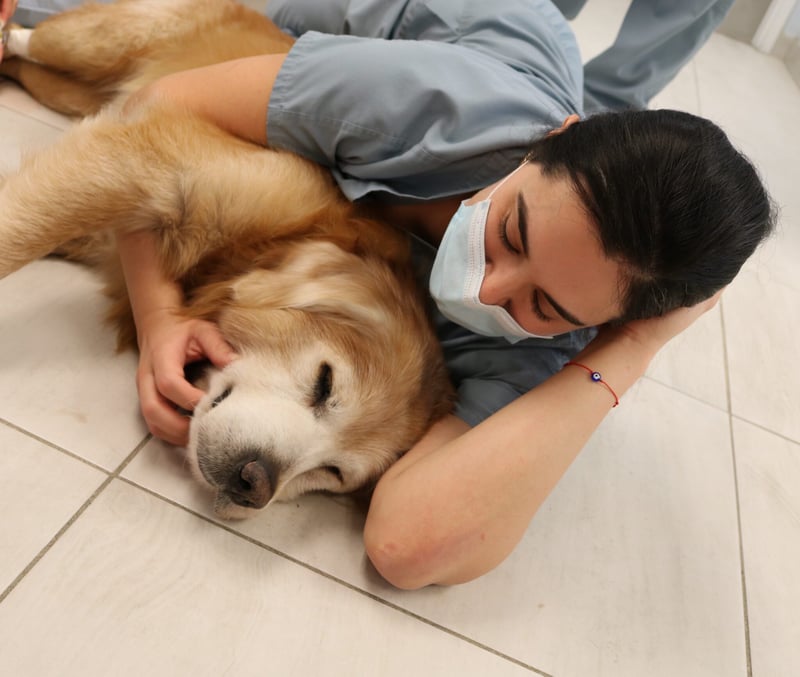
Normally, nerves relay messages from the brain using a chemical called acetylcholine that is received by a receptor on the surface of the muscle cells whenever a dog needs to move. In dogs with myasthenia gravis, there is a deficiency in acetylcholine receptors. The lack of receptors disrupts the signals between the brain and muscles.
Myasthenia gravis in dogs can be congenital or acquired.
Congenital Myasthenia Gravis in Dogs
Rarely, dogs are born with myasthenia gravis. In congenital myasthenia gravis, dogs are born without enough acetylcholine receptors on their muscles to properly receive signals from the brain.
Symptoms of progressive muscle fatigue will become apparent around six to nine weeks of age, with the affected puppy being weaker than its littermates and easily tiring.
Certain breeds are more prone to congenital myasthenia gravis:
- Springer Spaniel
- Jack Russell Terrier
- Smooth Haired Fox Terrier
- Samoyed
- Miniature Dachshund
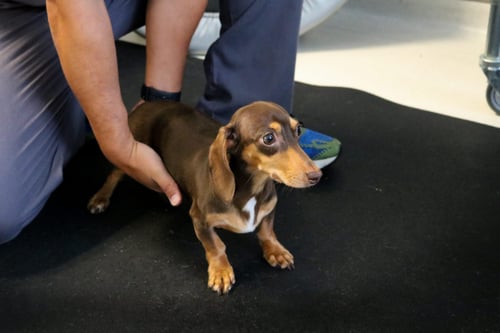
Congenital myasthenia gravis is diagnosed with a muscle biopsy, but unfortunately, there is no cure so the prognosis is poor. However, many cases in Miniature Dachshunds have been shown to resolve on their own without any treatment.
Acquired Myasthenia Gravis in Dogs
More commonly, myasthenia gravis in dogs is acquired, meaning the disease develops at some point during your dog’s lifetime. Acquired myasthenia gravis is an autoimmune condition where your dog’s immune system produces antibodies that destroy the acetylcholine receptors on its own muscles. Without enough receptors, the muscles’ ability to process signals from the brain is reduced, leading to muscle weakness.
SYMPTOMS OF ACQUIRED MYASTHENIA GRAVIS
Acquired myasthenia gravis generally presents as exercise-induced weakness in adult dogs between two and four years old, but sometimes in older dogs around nine or ten. Patients will often initially walk normally, progress to hind limb weakness resembling a bunny hop, and finally decide to stop and lie down.
Unfortunately, the muscles of the esophagus are usually affected too. Reduced muscle function causes the esophagus to dilate, a condition called megaesophagus that makes it difficult to move food and water into the stomach, resulting in regurgitation. This can lead to accidental inhalation of food and water into the lungs, which can cause a serious lung infection known as aspiration pneumonia. Up to 85% of dogs with myasthenia gravis also have megaesophagus.
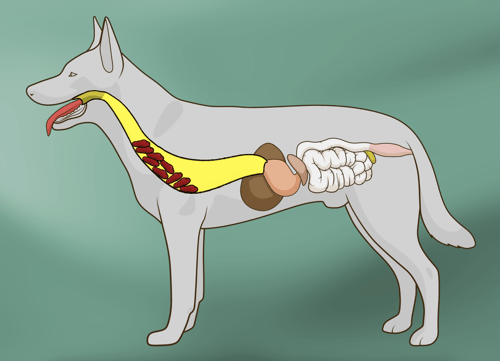
Signs of myasthenia gravis can include:
- Generalized muscle weakness with activity that improves with rest
- Easily tiring
- Dysphonia (abnormal bark)
- Dysphagia (difficulty swallowing)
- Retching or gagging
- Regurgitation of food and water
- Respiratory distress from aspiration pneumonia
Any dog can acquire myasthenia gravis, but it is more common in certain breeds:
- German Shorthaired Pointers
- Golden Retrievers
- German Shepherds
- Chihuahuas
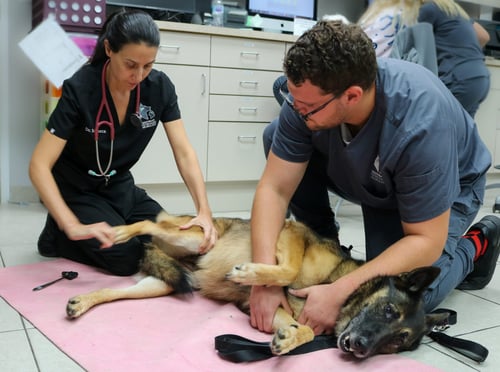
DIAGNOSING ACQUIRED MYASTHENIA GRAVIS
If a neurological exam reveals signs associated with the disease, such as reduced reflexes, acquired myasthenia gravis can be diagnosed with a blood test that looks for antibodies to acetylcholine receptors. The anti-acetylcholine receptor antibody test is sent to a special lab in California that provides results in 10 to 14 days.
In the meantime, a neostigmine challenge test may also be used. This test involves an injectable medication that will temporarily improve muscle strength in dogs with myasthenia gravis. However, it is just a test, and the effects will wear off after a few minutes. It is also important to note that it may not work in all dogs.
Concurrent conditions such as hypothyroidism and cancer are also often present with myasthenia gravis in dogs. Your neurologist will perform a general health screening that includes a physical, blood work, infectious disease titers, thyroid panel, and X-rays to look for these, as well as megaesophagus and aspiration pneumonia.
TREATMENT FOR ACQUIRED MYASTHENIA GRAVIS
Acquired myasthenia gravis typically resolves on its own within six months, as the immune system attack gradually dies down. Therefore, the goal of treatment is to control symptoms until that happens. This includes daily medication and alterations to how your dog is fed due to megaesophagus.
Unfortunately, the megaesophagus tends to be permanent. Feeding your dog in an upright position and keeping your dog in that position for 20-30 minutes after each meal, along with smaller, more frequent feedings can help prevent aspiration pneumonia. Elevated food bowls or a Bailey chair can help.
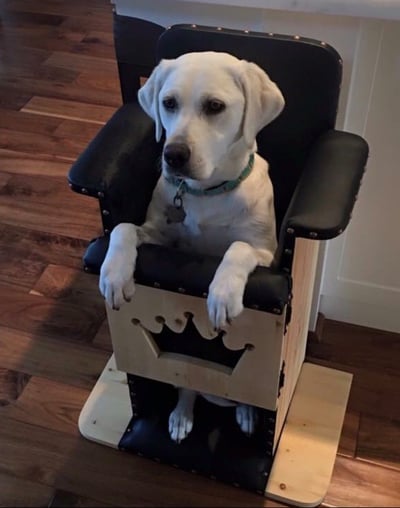
Photo Credit: The Dodo
PROGNOSIS FOR ACQUIRED MYASTHENIA GRAVIS
If no megaesophagus is present, the prognosis for acquired myasthenia gravis in dogs can be quite positive. Unfortunately, a large amount of dogs continue to experience megaesophagus for the rest of their lives.
In many cases, pet parents are able to make adjustments at home to manage the megaesophagus. However, severe or recurrent aspiration pneumonia can lead to less favorable outcomes. Sadly, up to 50% of these dogs will develop pneumonia multiple times, causing many pet parents to make the difficult decision to say goodbye.
How SEVN Can Help with Myasthenia Gravis in Dogs
If you notice your dog generally being weaker than normal and tiring out easier than usual, especially if vomiting or regurgitation of food and water are present, these would be strong indications to take your dog to a veterinary neurologist.
Southeast Veterinary Neurology (SEVN) has experienced, compassionate veterinary neurologists available to accurately diagnose and expertly treat myasthenia gravis in dogs. Contact one of our locations in Miami, Boynton Beach, Jupiter, and Virginia Beach today if you notice any neurological signs, such as difficulty walking, in your dog.